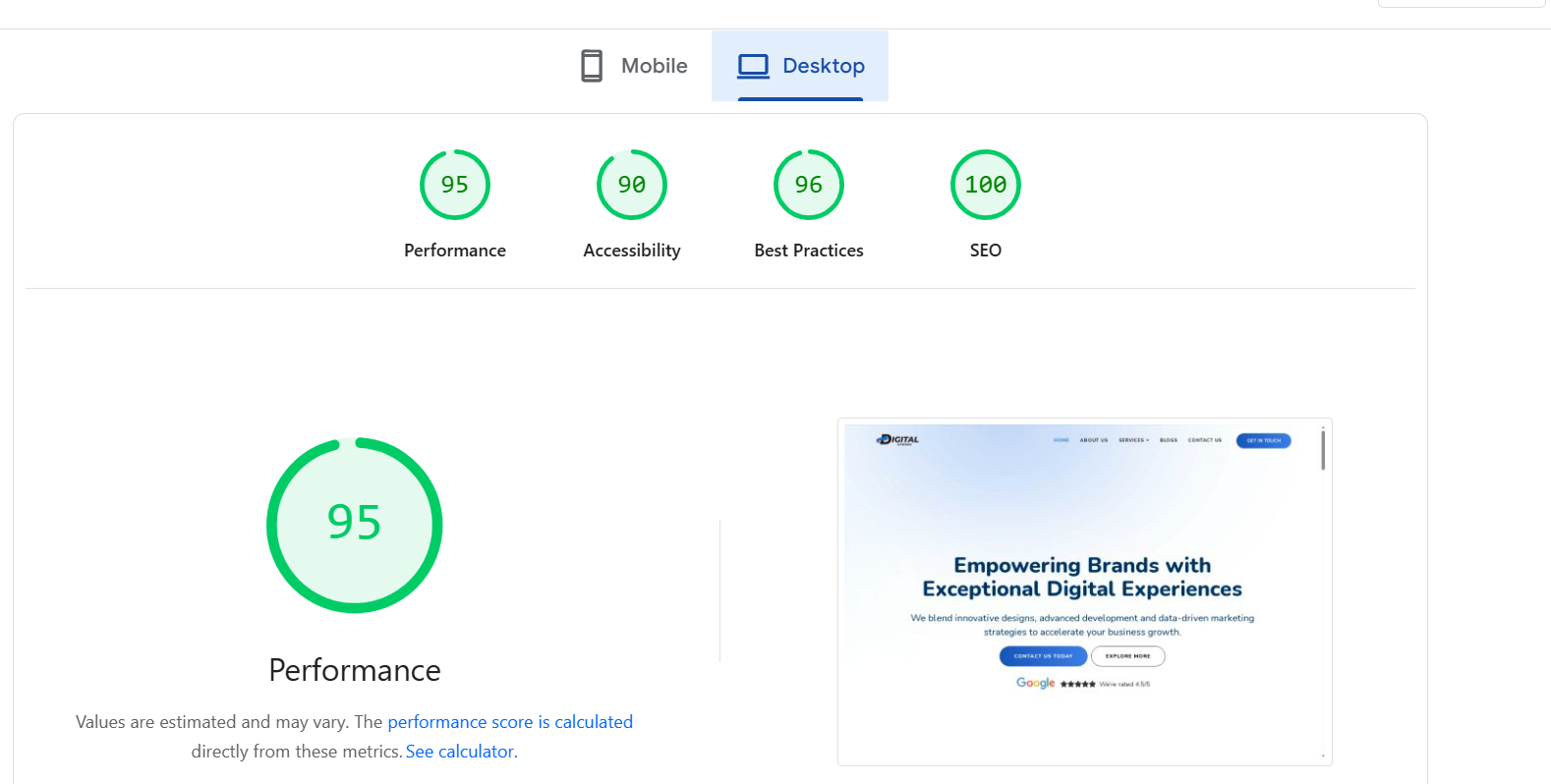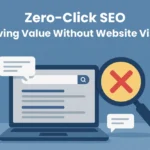
It’s no longer sufficient for a website in a digital environment to be aesthetically pleasing. Search engines (such as Google) care less about the visuals above all other aspects of user experience. Core Web Vitals measures are now a necessity for ranking. Websites with unoptimized, slow, and unresponsive page content will lose both user traffic and search engine rankings. These metrics need to be understood and optimized for a website to achieve higher business visibility.
Understanding Core Web Vitals: Key Metrics for Page Experience
Core Web Vitals consist of a group of specific factors that Google considers important for measuring user experience on your site. They are metrics that measure three core areas: loading, interactivity, and visual stability. Consider them as vital signs of your website’s health, indicating how well it performs in terms of user experience.
These; are LCP, or Largest Contentful Paint (a metric for loading performance), FID, or First Input Delay (a metric for interactivity), and CLS, or Cumulative Layout Shift (a metric for visual stability) that constitute the three core metrics. LCP is calculated by the time when the main content of the page is visually presented, FID is calculated by the time from the user’s first interaction to the time when the browser is processing the input, and CLS is calculated by the count of the items which are changing their position unexpectedly while the page is still loading.
Google suggests that LCP should be less than 2.5 seconds, FID less than 100 milliseconds and CLS less than 0.1, for a minimum of 75% of visits to a page. These website performance metrics gives an option to make fair assessment and comparison of user experience across various websites.
How Core Web Vitals Impact Your SEO Performance
Websites that provide a great user experience are usually much preferred by search engines. Core web vitals are those metrics that can directly tell us about our digital ranking as per the search engine analysis playing a vital role in our effective SEO strategy.
When a site is fast and offers an immediate response to any user action, users are then likely to indulge further into such a site. For example, in the case of an e-commerce business, they will be encouraged to become customers. Optimizing Core Web Vitals is not just about satisfying algorithms; it’s about creating a seamless user experience. This leads to lower bounce rates, longer session durations, and higher conversion rates naturally.
The Importance of Core Web Vitals to Improve User Engagement
Maximizing mobile page speed is crucial because more users are browsing the internet on smartphones and tablets. As per the results of an elaborative research, 53% of users on mobile devices are those people who had given up on websites that take more than three seconds to load. Thus every fraction of a second is very important if one wants to keep their visitors interested.
Poor Core Web Vitals have a significant negative influence on the satisfaction of users in a way that can be quantified. To put it simply, slow loading times irritate users, delayed interactivity gives the impression that the site is not working, and unexpected layout changes cause users to click on things unintentionally. A user-friendly website design will help you gain user trust by enhancing the speed and stability of the design. This will enable repeated visits and increase the number of conversions.
Strategies to Enhance Core Web Vitals and Website Performance
Optimizing for Largest Contentful Paint (LCP)
LCP; is primarily about the speed at which users get to see the major content of the page. There are several methods which contribute a lot in enhancing the LCP score, and the very first one is the optimization of images. Compress all your images as much as possible without compromising with the quality. WebP formatted images or lazy loading also contributes a lot in reducing the LCP score.
After optimizing images, we need to analyze server response times. If your site is hosted with a low quality provider, your site may have problems with long response times. Caching is also a consideration (page caching & object caching). A CDN (Content Delivery Network) serves your files from locations closer to the user.
It’s a good idea to remove any render blocking resources. Make sure you remove any CSS or JavaScript that is not being used so that it should not stop your site from loading quickly.
Consider preloading critical resources like hero images or the fonts your site is using to display at the earliest. This tells the browser that we need to load these resources as quickly as possible. Pulling resource files apart is also a good idea. Consider deferring JavaScript that is not critical for early rendering. By doing this, the main content will render faster giving better experience.
Optimizing for First Input Delay (FID)
First Input Delay (FID) is a metric that accounts for the time a website takes to respond to user actions, such as clicks or taps. A major factor in achieving better FID is the reduction of the JavaScript execution time and the division of long tasks that hinder the main thread. For instance, a hefty JavaScript file can cause the browser to freeze, thereby disallowing it from responding to user clicks or taps.
Firstly, remove all the unnecessary third party scripts you are using. Adding more scripts increases the processing time resulting in a considerable amount of delay. If there are some important scripts that have to be added, apply asynchronous loading to them to prevent delay in the main thread. You can also consider the effective use of web workers to control complex javascript operations in the background without having any hindrance in the responsiveness of the interface.
You can make your code more efficient by removing the unused JavaScript and CSS from your code, splitting your large bundles into smaller ones, and performing code splitting so that only the necessary parts of a page are loaded. With this technique, users can immediately interact with your site while the rest of the functionality is getting loaded in the background.
Optimizing for Cumulative Layout Shift (CLS)
CLS measures visual stability by tracking unexpected movement of page elements during loading. To improve CLS, always include size attributes (width and height) for images and videos so the browser can reserve the appropriate space before they load. This simple step prevents sudden jumps when media appears on screen.
Reserve space for ads and embeds using CSS aspect ratio boxes or minimum height declarations. Avoid inserting new content above existing content unless it’s in response to user interaction. Be particularly careful with dynamic content that pushes other elements down the page after loading.
Choose system fonts or preload custom fonts to prevent text from shifting when web fonts load. Use the font-display: swap property carefully, as it can cause layout shifts if the fallback and web fonts have significantly different dimensions. Consider using fallback fonts with similar metrics to minimize this effect.
Conclusion
Improving Core Web Vitals has become a necessary undertaking for anyone invested in online success. They are direct factors of search engine ranking and user interaction, making them a vital part of any digital strategy. By applying the approaches discussed above to systematically address LCP, FID, and CLS, you can create a website that’s faster and more responsive for a better user experience, in turn leading to great search engine performance.
Digital Upward understands that improving site performance is an ongoing process. If you are after a full-fledged website development solution or specialized Core Web Vitals optimization, your money is best spent if you keep these vital figures in control. The benefits of these techniques can be seen in terms of traffic, engagement, and conversions. Get your Core Web Vitals in check and make the move towards giving the kind of user experience that today’s users expect and search engines reward.


 How to Improve Core Web Vitals & Page Experience for Better SEO Results
How to Improve Core Web Vitals & Page Experience for Better SEO Results Understanding Search Intent: A Guide for Digital Marketers
Understanding Search Intent: A Guide for Digital Marketers Top Video Content Strategies to Elevate Your Social Media Presence
Top Video Content Strategies to Elevate Your Social Media Presence Top 12 Chrome Extensions Every SEO Expert Should Know
Top 12 Chrome Extensions Every SEO Expert Should Know Zero-Click Searches: How to Rank Without Click
Zero-Click Searches: How to Rank Without Click